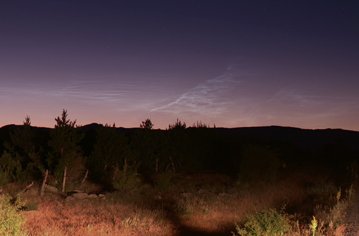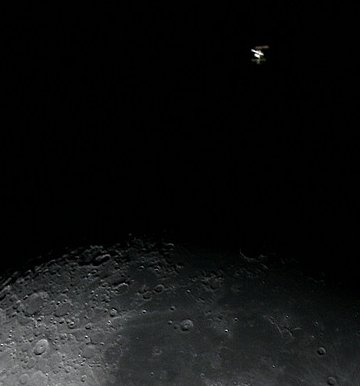
Noctilucent Surprise
Noctilucent clouds (NLCs) are supposed to be a high-latitude phenomenon, most often seen in Canada, Russia and northern Europe. So imagine the surprise of veteran astrophotographer Tunç Tezel on July 13th when he saw noctilucent tendrils peeking above the horizon of Turkey:
"This view of noctilucent clouds may be one of the farthest ever from the poles," says Tezel. "I went to mile-high Tasliyayla Plateau, 40 km south of Bolu for dark skies. Noctilucent clouds lit up as soon as the morning twilight started. It was amazing! For the record, my location was 40o 31' N, 31o 37' E."
This sighting highlights a mystery of noctilucent clouds: Why are they spreading south? Noctilucent clouds first appeared in the late 19th century, and in those days they were confined to latitudes above 50o N (usually far above). In recent years, however, the clouds have been spotted in Oregon, Colorado, Utah, possibly Virginia, and now Turkey. These sightings are a call to sky watchers at all latitudes: Be alert for NLCs! Observing tips may be found in the photo gallery:
2008 Noctilucent Cloud Photo Gallery
[Strange Clouds] [Sky Cameras]
OVER THE MOON: No, it's not a cow. The solar arrays rule that out:
"It's the International Space Station (ISS)," says Leonardo Julio of Buenos Aires, Argentina. "We photographed it last night, July 13th, gliding past lunar crater Tycho. Julio's team, which included friends Enzo De Bernardini and Adriana Fernández, used an 8-inch Meade LX90 equipped with a Canon 20D digital camera to capture the flyby.
The ISS has grown so large in recent years that a backyard telescope is all you need to see its details. The solar arrays span 80 meters, about the same as 30 cows lined up single file. The station's habitable volume, 425 m3, equals the combined volume of about 100 dairy cows, while the mass of the station, 280,000 kg, equals 400 cows.
So, no it's not a cow. It's more like a whole herd.
STAMPEDE! This week the space station begins a series of bright evening flybys over North America. If you live in that part of the world, check the Simple Satellite Tracker to find out when to look.


